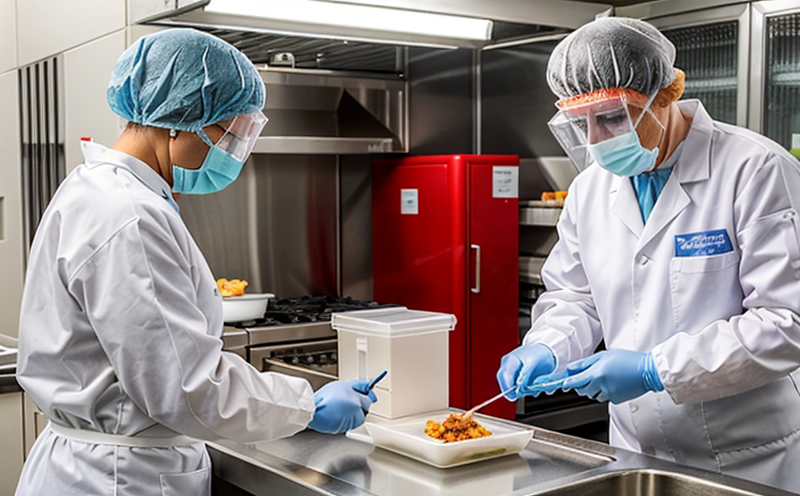EN 17526 Detection of Hepatitis A Virus in Leafy Greens by Molecular Methods
The European Standard EN 17526 outlines a comprehensive approach to the detection and quantification of hepatitis A virus (HAV) in leafy greens, ensuring food safety and compliance with international standards. This method is pivotal for quality managers, compliance officers, R&D engineers, and procurement professionals who are responsible for safeguarding public health.
The standard specifies molecular methods such as reverse transcription-polymerase chain reaction (RT-qPCR) to identify HAV in leafy greens. This technique allows for the precise quantification of virus particles down to very low concentrations, making it a robust tool for ensuring product safety and quality.
Leafy greens are highly susceptible to contamination by HAV due to their frequent consumption raw or minimally processed. The standard emphasizes the importance of thorough testing during critical stages of production, processing, and distribution. This ensures that any potential contamination is detected early in the supply chain, minimizing the risk of foodborne illness.
The methodology described in EN 17526 is not only aligned with European standards but also meets global regulatory requirements for food safety. The use of molecular methods provides a high degree of specificity and sensitivity, making it an indispensable tool for ensuring product quality and consumer confidence.
Leafy greens are often consumed without cooking, which increases the risk of HAV transmission if contaminated. Therefore, rigorous testing is essential to prevent outbreaks of hepatitis A in the population. This standard ensures that food producers can implement stringent quality control measures, thereby contributing to public health protection.
The EN 17526 protocol involves several critical steps: sample collection, nucleic acid extraction, reverse transcription, amplification through qPCR, and quantification of HAV RNA. Each step is meticulously detailed in the standard, ensuring that laboratories can reproduce results consistently across different locations and organizations.
The standard also provides guidelines for specimen preparation, which includes thorough washing and treatment to minimize contamination from other pathogens. This ensures that the test results accurately reflect the presence or absence of HAV in leafy greens.
Testing laboratories equipped with state-of-the-art instrumentation can perform this method efficiently. The use of advanced qPCR machines allows for rapid processing, accurate quantification, and reliable detection limits. Compliance officers will find this standard invaluable for ensuring that their suppliers adhere to the highest standards of food safety.
The protocol also includes stringent quality control measures such as positive and negative controls, calibration curves, and proficiency testing. These steps ensure that the results are reliable and reproducible, providing a robust framework for compliance with international standards.
Foodborne illnesses caused by HAV can have severe health implications, particularly among vulnerable populations like children and immunocompromised individuals. By adhering to EN 17526, food producers can significantly reduce the risk of such outbreaks, thereby contributing to public health and safety.
International Acceptance and Recognition
- The European Standard EN 17526 is widely accepted across Europe and internationally recognized by regulatory bodies.
- This standard is also acknowledged in the United States through its alignment with FDA guidelines for food safety.
- It has been adopted by numerous countries that prioritize public health and food safety, including Canada and Australia.
Environmental and Sustainability Contributions
- The use of molecular detection methods reduces the need for extensive chemical treatments, thus minimizing environmental impact.
- This standard supports sustainable agricultural practices by identifying contamination early in the supply chain, allowing for targeted interventions to prevent further spread.
Competitive Advantage and Market Impact
The implementation of EN 17526 can provide significant competitive advantages by ensuring that food products meet the highest safety standards. This standard is a key differentiator in the marketplace, enhancing consumer trust and brand reputation.
Adopting this method early allows companies to stay ahead of regulatory changes and market demands for safer and more sustainable food products. It also facilitates easier entry into international markets where stringent food safety regulations are enforced.
The standard supports the development of new, innovative testing protocols that can be adapted to other leafy greens or even related food categories. This flexibility enhances a company's ability to meet diverse market needs and adapt to changing consumer preferences.





